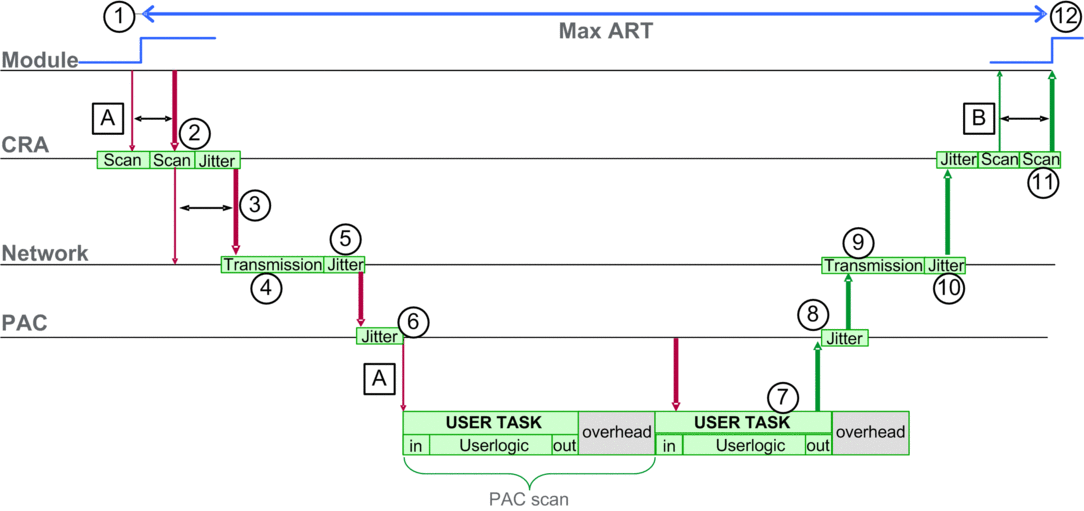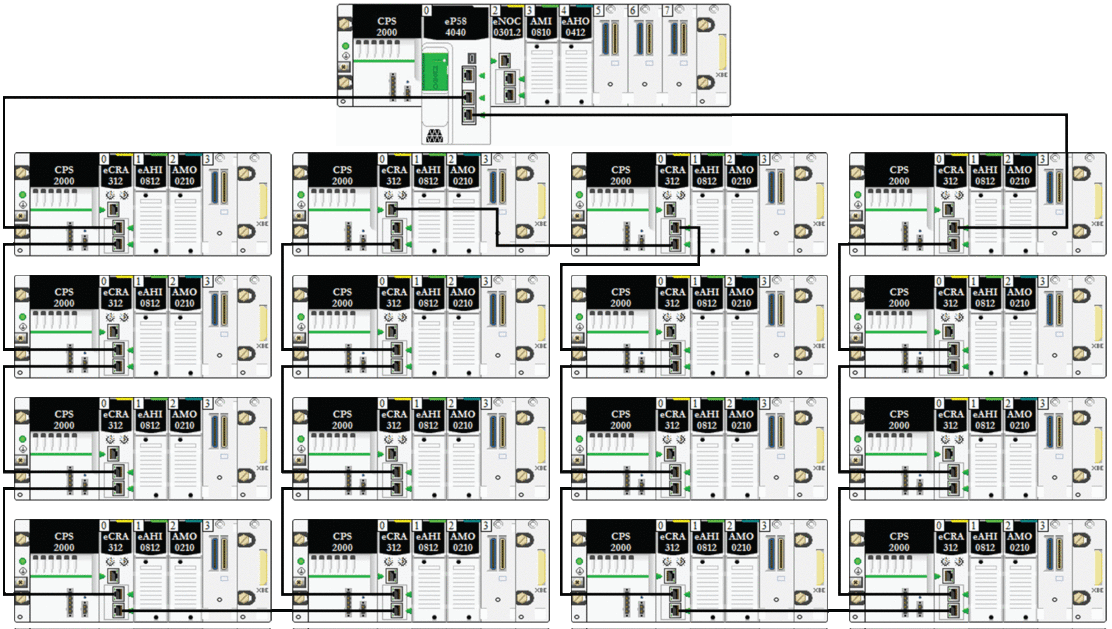Introduction
Each Ethernet RIO input signal packet travels from an RIO drop to the CPU, and the CPU sends an output signal back to the RIO drop. The time it takes for theCPU to receive the input signal and effect a change in the output module based on the input is called application response time (ART). In an M580 system, the ART is deterministic, which means you can calculate the maximum time the CPU uses to resolve an RIO logic scan.
Overview: ART Computation Parameters
The following diagram displays ART-related events and computation parameters. Refer to the Design Principles of M580 Networks appendix for details.

Legend:
A |
missed input scan |
6 |
CPU input jitter |
B |
missed output scan |
7 |
operation of application logic (1 scan) |
1 |
input turns ON |
8 |
CPU output jitter |
2 |
CRA drop processing time |
9 |
network delay |
3 |
CRA input Request Packet Interval (RPI) rate |
10 |
network jitter |
4 |
network delay |
11 |
CRA drop processing time |
5 |
network jitter |
12 |
output applied |
Quick Estimation of ART
To estimate the maximum ART based on the maximum number of RIO modules and distributed equipment for an application, sum these values:
CRA->Scanner RPI
2 * CPU_Scan (for the task)
8.8 ms ( a constant value representing the maximum CRA processing time)
ART considerations:
multitasking |
The above calculation is valid for each task. However, in a multitasking situation, the CPU_Scan time may be increased due to higher-priority tasks. If the MAST task is combined with the FAST task (multitasking), the CPU_Scan for the MAST task may be increased significantly. The result of multitasking can be a much longer ART for the MAST task. |
Hot Standby |
Refer to the Modicon M580 Hot Standby System Planning Guide for Frequently Used Architectures to calculate ART for Hot Standby CPUs. |
broken cable |
If a cable break occurs or a cable is reconnected on the network, add an additional time period to the above ART calculation to allow for RSTP recovery. The additional time to be added equals: 50 ms + CRA->Scanner RPI. |
Simplified Computation of ART for Simple Daisy Chain Loop of BM•CRA312•0 Adapter Modules in a Main Ring
This example calculates the ART from the perspective of sixteen BM•CRA312•0 X80 EIO adapter modules that are connected to the CPU on the local rack through the main ring:

Recall that the formula to estimate the maximum ART is:
ART= CRA->Scanner RPI + CPU_Scan/2 + (2*CPU_Scan) + 8.8
Thus, for a task with a scan time of 40 ms and a CRA->Scanner RPI of 25 ms, maximum ART is:
max ART = 25 + (2*40) + 8.8 = 113.8 ms


